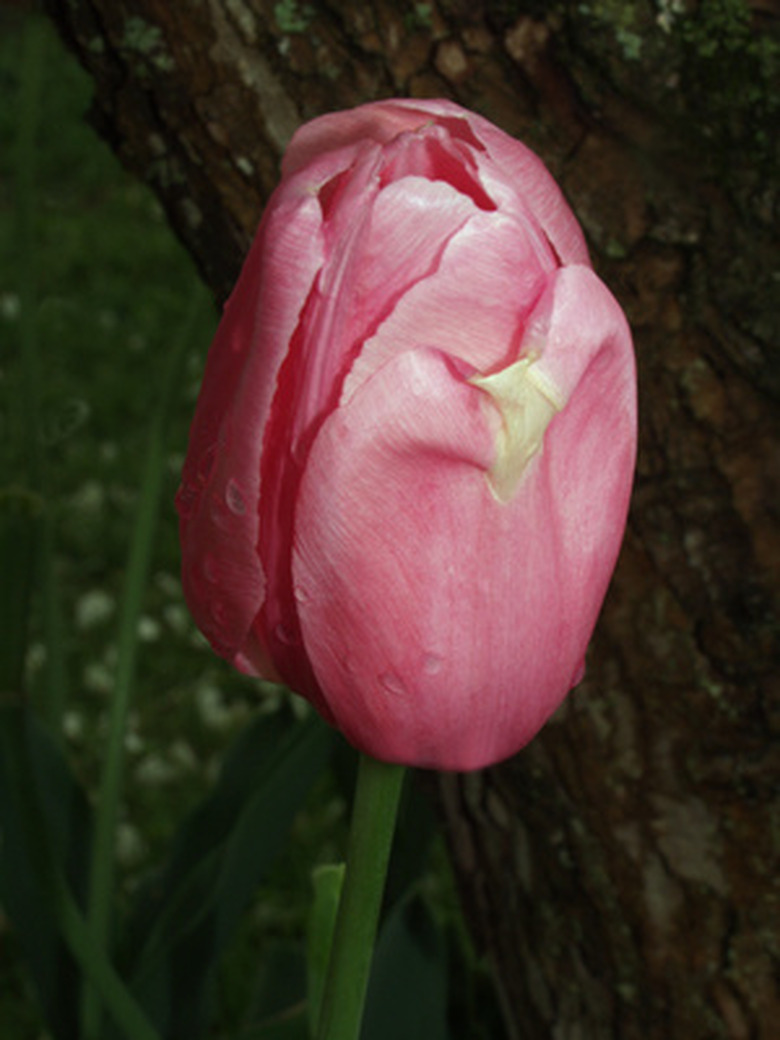What Are Tulip Tree Problems?
The deciduous tulip tree (Liriodendron tulipifera) grows to nearly 100 feet tall with a spread of 50 feet. It achieves a diameter of close to 4 feet. The yellow flowers bloom in spring. This tree thrives in USDA zones 5 through 9 in full sun or partial shade and it prefers damp soil but can tolerate some sand. This fast-growing tree is used as a street tree in many communities.
Tuliptree Scale Insect and Yellow Poplar Weevil
The tulip tree is sometimes attacked by the tuliptree scale insect (Toumeyella liriodendri), which sucks the tree's phloem sap, weakening it and often killing sapling trees. This insect resembles a tiny tank because it has an armored shell and does not move around after it becomes an adult. Ants carry this insect onto the tree, where they feed from its sweet, sticky excretion. Control scale populations with dormant spray in the winter to prevent widespread damage to the tree.
- The deciduous tulip tree (Liriodendron tulipifera) grows to nearly 100 feet tall with a spread of 50 feet.
- The tulip tree is sometimes attacked by the tuliptree scale insect (Toumeyella liriodendri), which sucks the tree's phloem sap, weakening it and often killing sapling trees.
The yellow poplar weevil, also called the sassafras or magnolia weevil, is a small black beetle that damages several species of trees, including the tulip tree. It eats the leaves and flower buds and can invade all of the tulip trees in a region. You can recognize the damage this insect causes because of the distinctive holes it chews in leaves that look like a curved grain of rice. In its larval stage, this beetle grows inside leaves and eats them from the inside out. Together, the adult beetle and its larvae can cause unsightly damage to many of the leaves of a tulip tree. Large, established trees are not usually killed or significantly harmed, according to the University of Kentucky.
Root Collar Borer and Columbian Timber Beetle
The root collar borer drills into the base of the tree and allows pathogens such as rots to enter the tree. In its adult moth stage, the root collar borer is a small moth that is brown to purple with a gray dusting on its wings. They cause damage at the tree's base, both above and below the ground surface, where they encircle the trunk with the holes they drill. Foliage can become yellow and the tree's crown can die back. Some parasitic insects, as well as woodpeckers, feed on this insect. Oil-based insecticides have been used successfully to control this insect, according to the Forest Pests website.
- The yellow poplar weevil, also called the sassafras or magnolia weevil, is a small black beetle that damages several species of trees, including the tulip tree.
- Together, the adult beetle and its larvae can cause unsightly damage to many of the leaves of a tulip tree.
The Columbian timber beetle can decrease the quality of this tree's wood. It exists in many parts of the Eastern and Southern United states and attacks other trees as well as the tulip tree. Adult beetles are red-brown to black and 1/5 inch in length. Larvae are legless and white, in the shape of a "c." The beetle drills small holes, less than 1/10 inch, into the tree's sapwood, which causes damage to the inside wood. Forest Pests reports that no predatory insects are known and that insecticides are the only known control for this insect.
Diseases
Several plant diseases can affect the tulip tree. The fungus known as Armillaria mellea causes a soft, spongy, gray or white rot to occur. The top of the tree can break and limbs can die due to a white heartwood rot that the Collybia velutipes pathogen causes. Stem cankers sometimes occur on trees that have less than optimal health; these cankers are mostly in the Nectria genus. Another canker is caused by Fusarium solani. A fungus in the Myxosporium genus causes dead bark and cankers, yellowing of leaves, reduced foliage at the tree's crown and general die-back.
- The Columbian timber beetle can decrease the quality of this tree's wood.
- The top of the tree can break and limbs can die due to a white heartwood rot that the Collybia velutipes pathogen causes.
